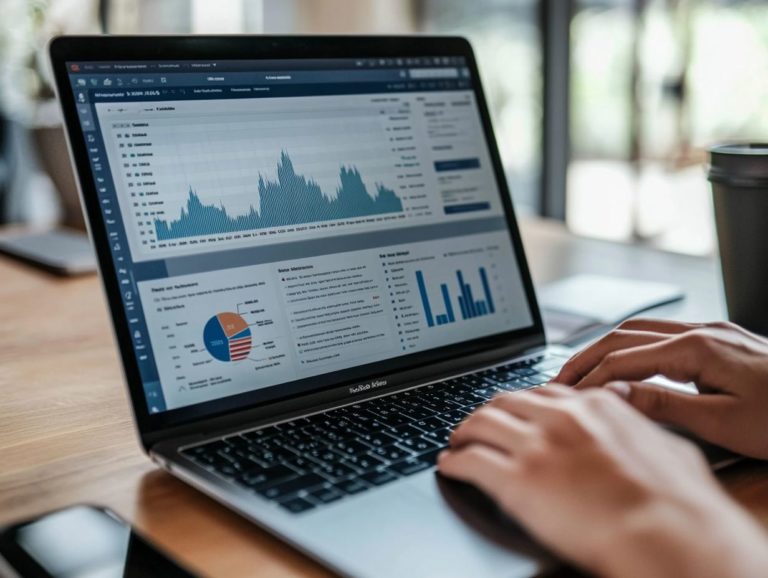5 Steps to Create a Lead Generation Funnel
Let's Set Up Your Lead Generation Strategy
Fill out the form below, and our team will get in touch with you to create a tailored solution for your business.
In today’s fast-paced digital landscape, generating quality leads is essential for your business’s success. A well-structured lead generation funnel can transform casual visitors into loyal customers by guiding them through steps tailored to their specific needs.
This guide will walk you through five crucial steps:
- Identifying your target audience
- Crafting a compelling offer
- Designing an effective landing page
- Driving traffic
- Nurturing those leads
You’ll also discover key components, common pitfalls to avoid, and strategies to optimize leads in your marketing strategy for maximum results.
Get ready to supercharge your lead generation strategy!
Contents
- Key Takeaways:
- 1. Identify Your Target Audience
- 2. Create a Compelling Offer
- 3. Design a Landing Page
- Let's Set Up Your Lead Generation Strategy
- 4. Drive Traffic to Your Landing Page
- 5. Nurture and Convert Leads
- What Is a Lead Generation Funnel and Why Is It Important?
- Let's Set Up Your Lead Generation Strategy
- Let's Set Up Your Lead Generation Strategy
- Frequently Asked Questions
- What are the 5 steps to create a lead generation funnel?
- How do I define my target audience for a lead generation funnel?
- What type of content should I create for a lead generation funnel?
- Why is a landing page important in a lead generation funnel?
- What are lead magnets and how do they work in a lead generation funnel?
- How can I analyze and optimize my lead generation funnel?
Key Takeaways:
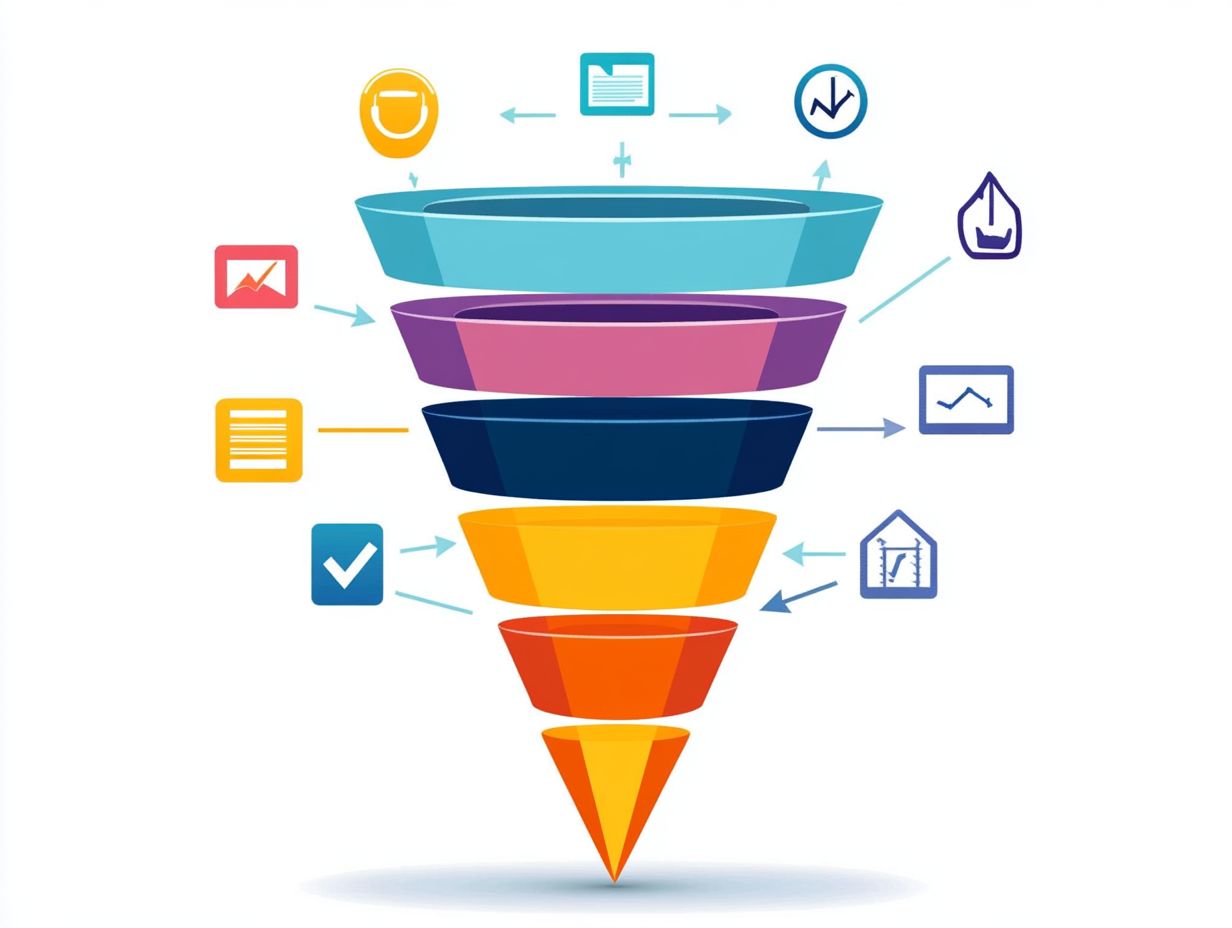
- Understand your target audience to tailor your funnel and attract the right leads.
- Offer a valuable and appealing incentive to entice potential leads to take action.
- A well-designed landing page can make or break your lead generation funnel’s success.
1. Identify Your Target Audience
Identifying your target audience is crucial for your B2B company’s lead generation strategy. Understanding potential customers helps you create marketing tactics that resonate with their needs.
To pinpoint the right audience, use market research techniques like surveys, interviews, and focus groups. These methods provide insights into customer preferences and pain points. Use customer segmentation methods to understand the different groups in the market better.
Don’t overlook the importance of analyzing engagement history through metrics such as web traffic, email open rates, and social media interactions. This analysis shows you what content truly connects with your audience.
By aligning your marketing efforts with the various stages of the lead generation funnel—Top of Funnel (TOFU), Middle of Funnel (MOFU), and Bottom of Funnel (BOFU)—you can ensure your content marketing effectively guides potential customers through their customer journey. This approach can skyrocket your conversion rates!
2. Create a Compelling Offer
Creating a compelling offer is crucial for attracting high-quality leads. Whether through enticing lead magnets, irresistible discounts, or free trials, your offers should resonate with your audience’s needs.
These offers can be customized for various stages of the customer journey, ensuring that potential customers find something valuable at every interaction. For instance, providing educational ebooks can be especially effective for those in the awareness stage, as they deliver valuable insights while showcasing your expertise. Webinars offer a similar benefit but with the added bonus of interactive engagement.
On the other hand, exclusive content or members-only resources can appeal to those further along the buyer’s journey, driving higher conversion rates. Ultimately, these thoughtfully crafted incentives encourage individuals to engage more deeply with your brand.
3. Design a Landing Page
Designing an effective landing page is essential for optimizing leads within your lead generation funnel. It serves as the first impression for potential customers and significantly influences your conversion rates through well-structured and engaging content.
To maximize effectiveness, your landing page should utilize strategic layouts that guide visitors’ attention toward key information, complemented by clear and concise headings. Positioning calls-to-action prominently ensures they capture users’ interest without causing confusion.
Content optimization is equally vital; tailor it to address your audience’s needs and pain points, using persuasive language that truly resonates with them.
Let's Set Up Your Lead Generation Strategy
Fill out the form below, and our team will get in touch with you to create a tailored solution for your business.
A/B testing becomes essential in this process, enabling you to make real-time adjustments based on user interactions and preferences. This iterative approach enhances the overall user experience and boosts the likelihood of converting visitors into loyal customers.
4. Drive Traffic to Your Landing Page
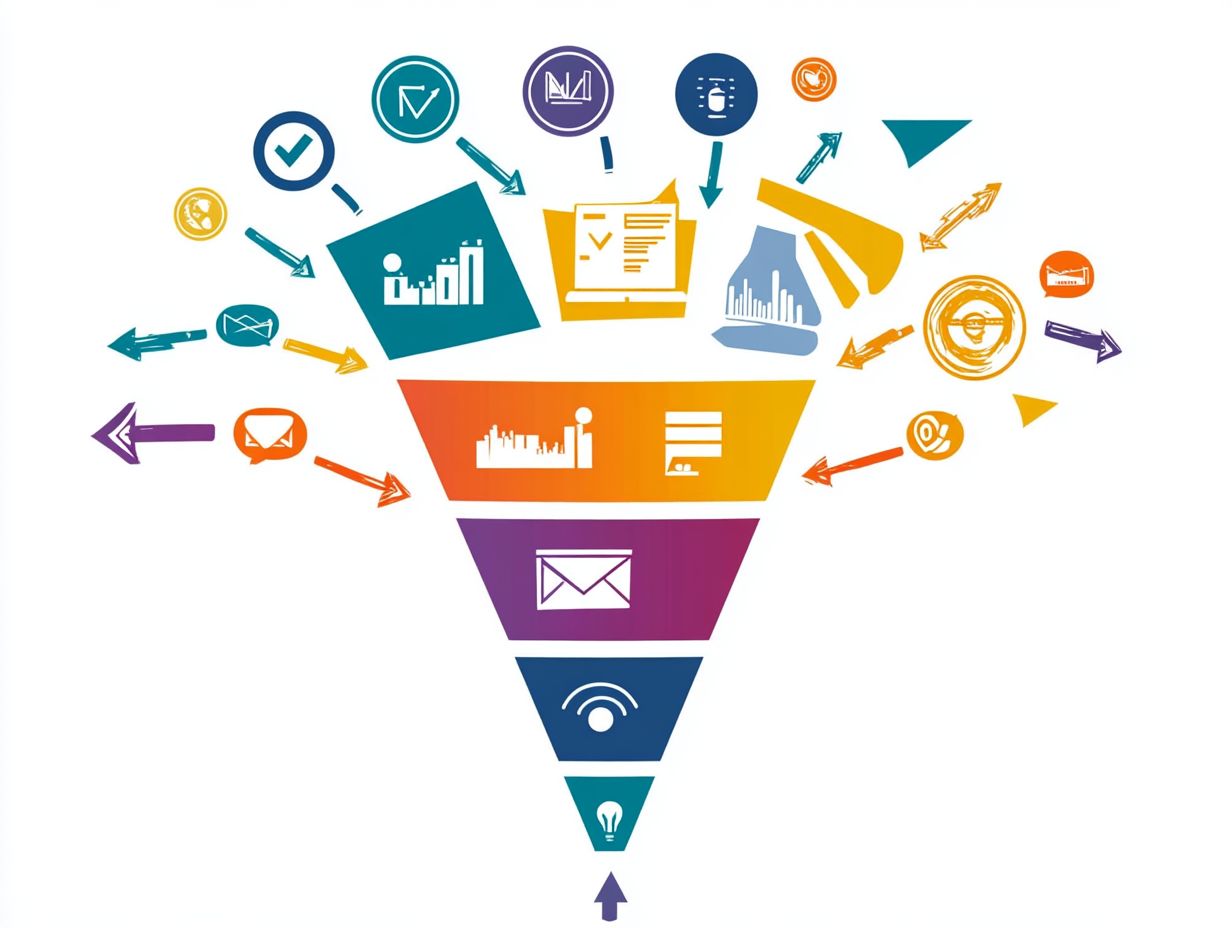
Driving traffic to your landing page is a pivotal element of your marketing strategy. You can achieve this through a harmonious blend of content marketing, social media outreach, email campaigns, and paid advertising, all designed to maximize your visibility among your target audience.
By harnessing both organic methods—like SEO strategy and engaging blog posts—and paid tactics such as pay-per-click campaigns (where you pay for each click on your ads), you can cultivate a well-rounded approach that captures attention from diverse segments of potential customers.
Analyzing your traffic reports is essential. These insights offer valuable feedback, enabling you to identify which channels deliver the best results. This knowledge helps you make informed adjustments to your strategy.
Audience engagement is also crucial for maintaining steady traffic levels. By encouraging interactions through comments, surveys, and social media shares, you create a sense of loyalty and community around your brand. This ultimately leads to sustained traffic growth over time.
5. Nurture and Convert Leads
Nurturing and converting leads is an essential stage in your lead generation funnel. Strategic email nurture campaigns can expertly guide potential customers through the sales process and enhance the overall mapping of their customer journey.
By employing personalized communication strategies—think tailored onboarding campaigns and engaging tactics—you can effectively capture and maintain your audience’s interest. This meticulous attention to detail cultivates a deeper connection with prospects and provides you with invaluable insights into their journey.
By recognizing the distinct stages along this path, you can pinpoint moments where potential leads might lose interest. This opens up opportunities to refine your outreach efforts. Ultimately, this understanding can lead to higher conversion rates and greater accuracy in identifying marketing qualified leads, ensuring that your resources are allocated with precision.
What Is a Lead Generation Funnel and Why Is It Important?
A lead generation funnel is your strategic ally in transforming potential customers into loyal clients. It encompasses various stages—from that initial spark of awareness to the final conversion—while meticulously managing lead data to elevate the customer experience throughout the sales process.
Understanding these stages—Top of Funnel (TOFU), Middle of Funnel (MOFU), and Bottom of Funnel (BOFU)—is essential for nurturing relationships with your prospects and creating a robust sales process.
In the TOFU stage, you’ll want to create captivating content like blog posts or social media campaigns to draw in a wide audience and ignite their interest. As they transition to the MOFU stage, prospects will crave more detailed information, prompting you to offer case studies or webinars that tackle their specific pain points.
Finally, in the BOFU stage, platforms like Digital Marketer and G2 provide tailored solutions and demos, empowering prospects to make informed purchasing decisions.
This structured approach not only drives conversions but also builds trust, enhancing your long-term customer retention.
How Can You Determine the Success of Your Lead Generation Funnel?
Determining the success of your lead generation funnel requires a keen analysis of essential metrics, including conversion rates and qualified leads, along with insightful traffic reports that unveil engagement levels across various channels.
Let's Set Up Your Lead Generation Strategy
Fill out the form below, and our team will get in touch with you to create a tailored solution for your business.
By diligently monitoring lead conversion rates at each stage of the funnel—from the initial capture to the final sale—you can pinpoint where potential clients might be slipping away. For example, if you notice a substantial number of leads aren’t converting during the nurturing phase, it could indicate the necessity for more tailored content or targeted follow-ups.
These metrics provide invaluable insights for making strategic adjustments. They enable you to test different approaches and optimize your outreach efforts. Ultimately, tracking these performance indicators not only fine-tunes your marketing strategies but also enhances overall lead generation effectiveness, creating a streamlined process that truly resonates with your target audience.
Take action now! Implement these strategies and watch your leads grow!
What Are the Key Components of a Lead Generation Funnel?
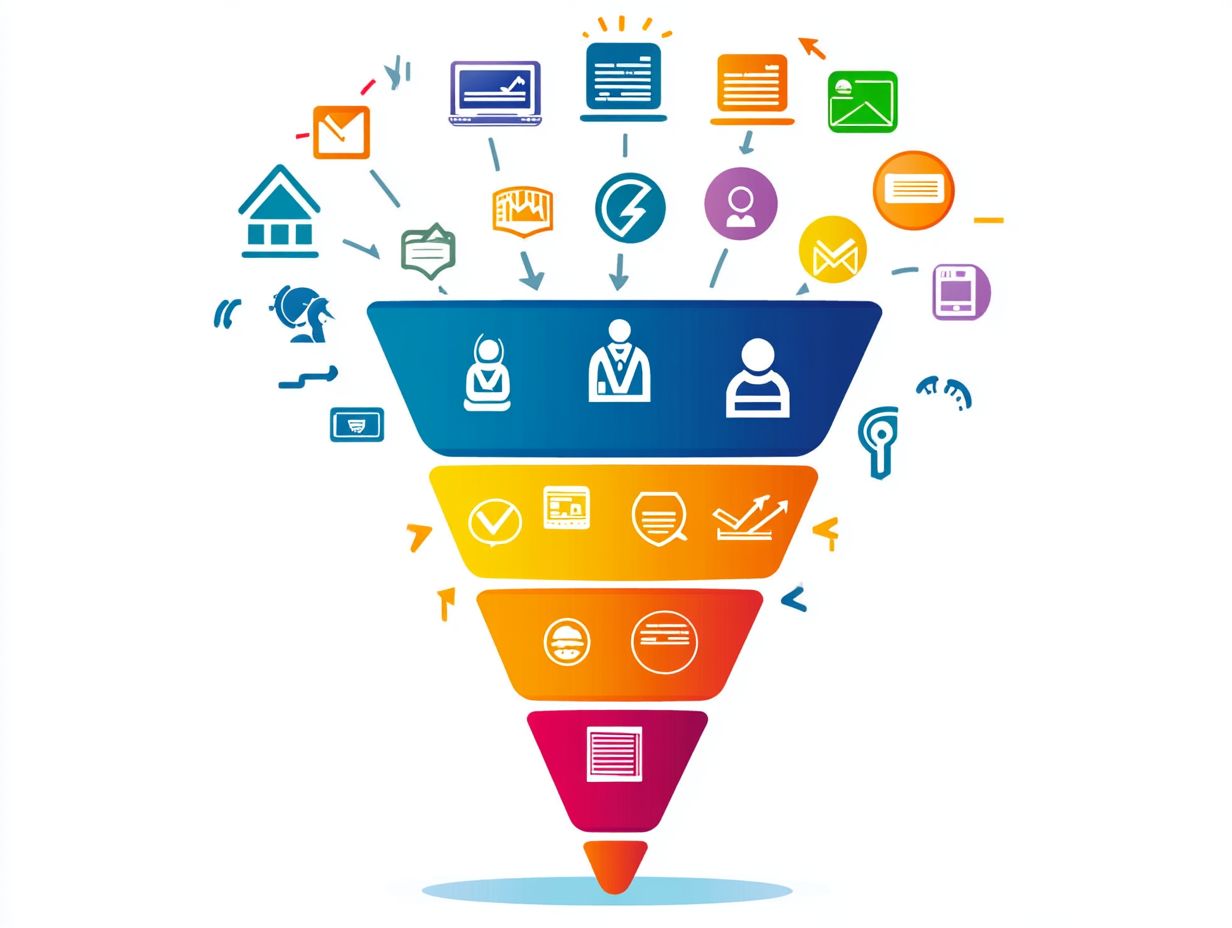
The key components of a lead generation funnel include lead magnets, content assets, and strategic marketing tactics. These elements effectively guide you through the customer journey from awareness to conversion, enhancing your overall lead generation.
Each of these elements plays a crucial role in nurturing your leads and maximizing engagement. Lead magnets—such as eBooks, whitepapers, or free trials—act as enticing incentives. They encourage you to share your contact information in exchange for valuable content. For example, many B2B companies have found success using webinars as lead magnets, showcasing their expertise while building a list of engaged participants.
Content assets, like case studies and blogs, enrich the funnel by providing in-depth insights and addressing your questions. This ultimately fosters trust and credibility. Meanwhile, strategic marketing tactics—think targeted email campaigns and social media outreach—efficiently guide you through the funnel, steering you towards that all-important conversion action.
How Can You Optimize Your Lead Generation Funnel for Better Results?
Optimizing your lead generation funnel for better results demands a sophisticated marketing strategy. This strategy should harness customer insights to refine every stage of the funnel, focusing particularly on the conversion stage.
Implement effective A/B testing, a method of comparing two versions of a webpage to see which performs better. This will gauge the impact of different content and offers, ensuring that each element resonates with your target audience. Improving user experience throughout the funnel can significantly elevate engagement levels. Integrating personalized communication strategies that directly address the needs of potential customers is also beneficial.
Always evaluate your strategies to stay ahead! Adapt to shifts in customer behavior and preferences. This ongoing refinement ultimately paves the way for sustainable growth and higher conversion rates.
What Are the Common Mistakes to Avoid in Lead Generation Funnels?
Common mistakes in lead generation funnels can significantly hamper your marketing efforts. These often arise from a lack of alignment between your sales team and marketing, misidentifying marketing-qualified leads, or poorly defined customer journeys.
These pitfalls can waste resources and lead to missed opportunities, allowing prospective customers to slip through the cracks without receiving the attention they deserve. Inadequate follow-up strategies and ineffective lead magnets can leave potential clients feeling neglected or confused about the value you offer.
To tackle these challenges, prioritize regular communication between your sales and marketing departments. Ensure everyone shares a clear understanding of goals and metrics.
Develop robust lead scoring systems to clarify which leads are genuinely valuable. This allows for more targeted engagement. Also, create compelling and relevant lead magnets tailored to your target audience to enhance initial attraction and retention.
What Are the Different Types of Lead Generation Funnels?
There are several types of lead generation funnels, each crafted specifically to meet the unique needs of B2B companies and their target audiences. These funnels expertly guide potential customers through the customer journey in a systematic way.
Let's Set Up Your Lead Generation Strategy
Fill out the form below, and our team will get in touch with you to create a tailored solution for your business.
These funnels cater to various stages of engagement, aligning with specific marketing strategies that resonate with prospective clients.
For example, content marketing funnels focus on drawing in leads through valuable and informative content—like blogs or eBooks—that educate and enlighten your audience. Conversely, email marketing funnels target leads who are already familiar with your brand, employing personalized messages to nurture relationships and drive conversions.
Webinar funnels create interactive experiences. They allow potential customers to engage with experts directly, providing deeper insights and answering questions in real time. Each type of funnel plays a pivotal role in guiding leads closer to making well-informed purchasing decisions.
Start optimizing your lead generation funnel today!
Frequently Asked Questions
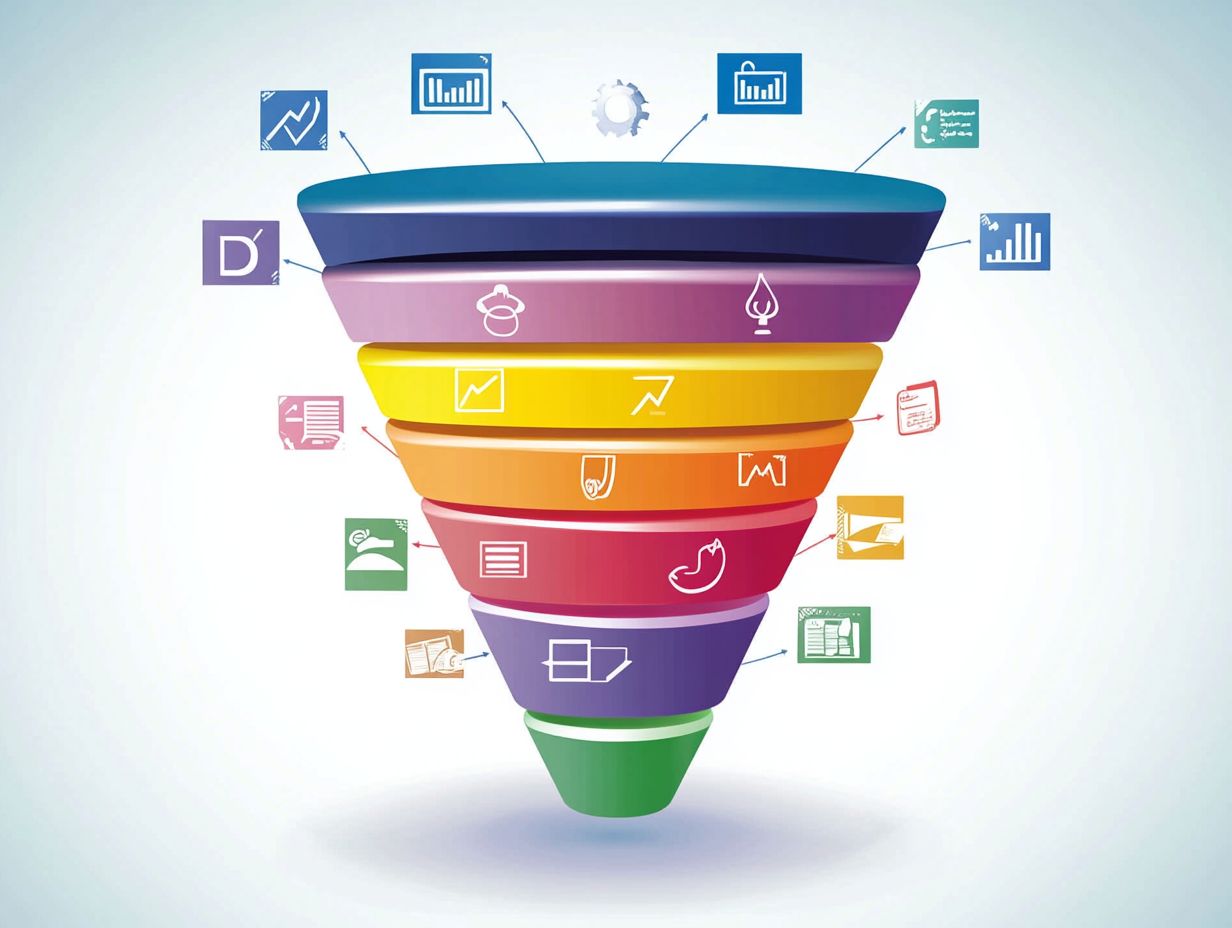
What are the 5 steps to create a lead generation funnel?
Creating a lead generation funnel involves five key steps. These are defining your target audience, creating engaging content, designing a landing page, implementing lead magnets, and analyzing your results.
How do I define my target audience for a lead generation funnel?
Start by building profiles of your ideal customers. Consider who they are, what they do, and the challenges they face.
What type of content should I create for a lead generation funnel?
Your content should address your audience’s needs. Options include blog posts, videos, webinars, and downloadable items like e-books or templates.
Why is a landing page important in a lead generation funnel?
A landing page is crucial as it’s where potential leads arrive after clicking your ad. A great landing page captures information and guides visitors to become leads.
What are lead magnets and how do they work in a lead generation funnel?
Lead magnets are valuable items you provide in exchange for contact details. Examples include free e-books, checklists, or templates that attract and nurture leads.
How can I analyze and optimize my lead generation funnel?
Track each step of your funnel by measuring key metrics like click-through rates and lead quality. Use this information to enhance your funnel for better results.


